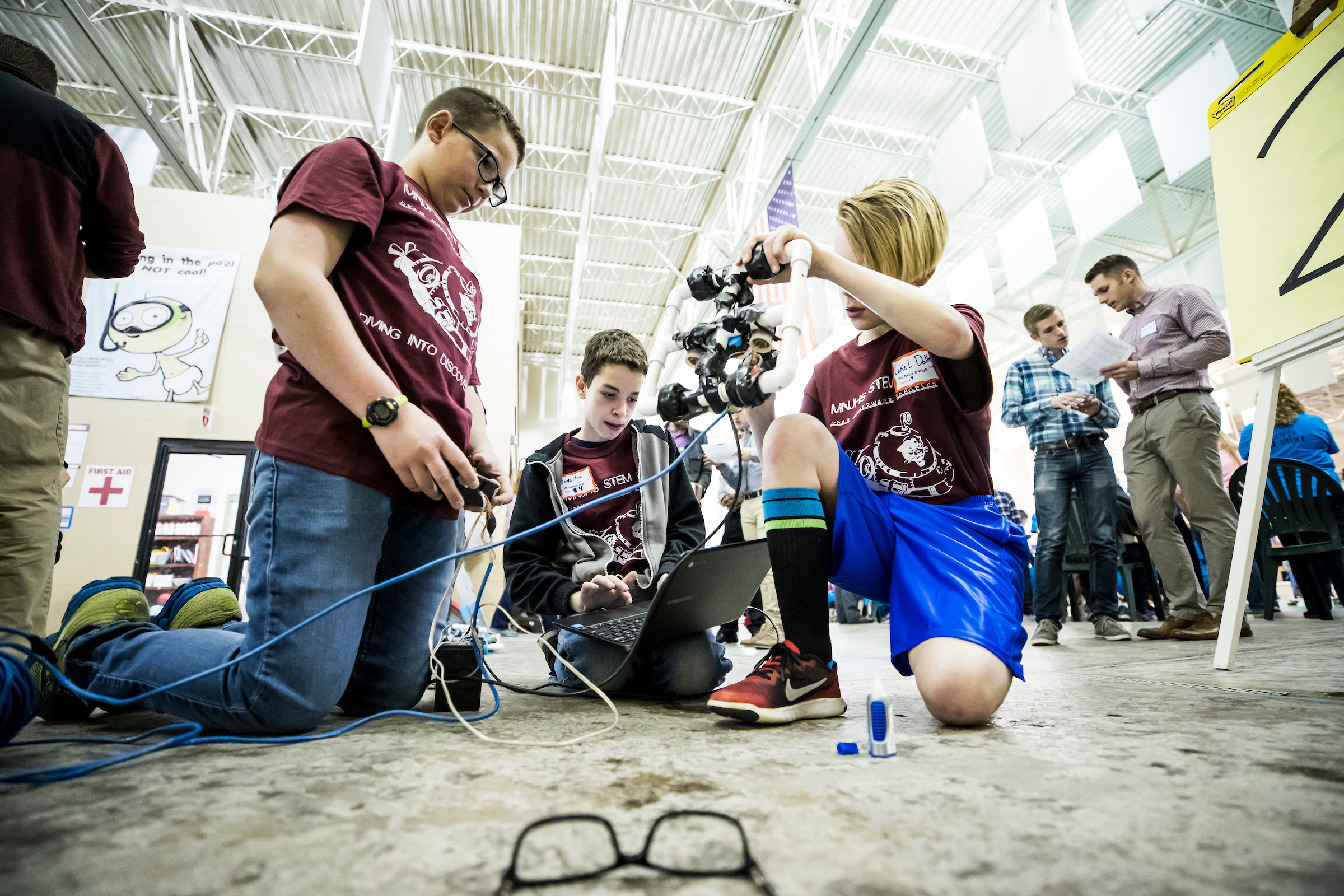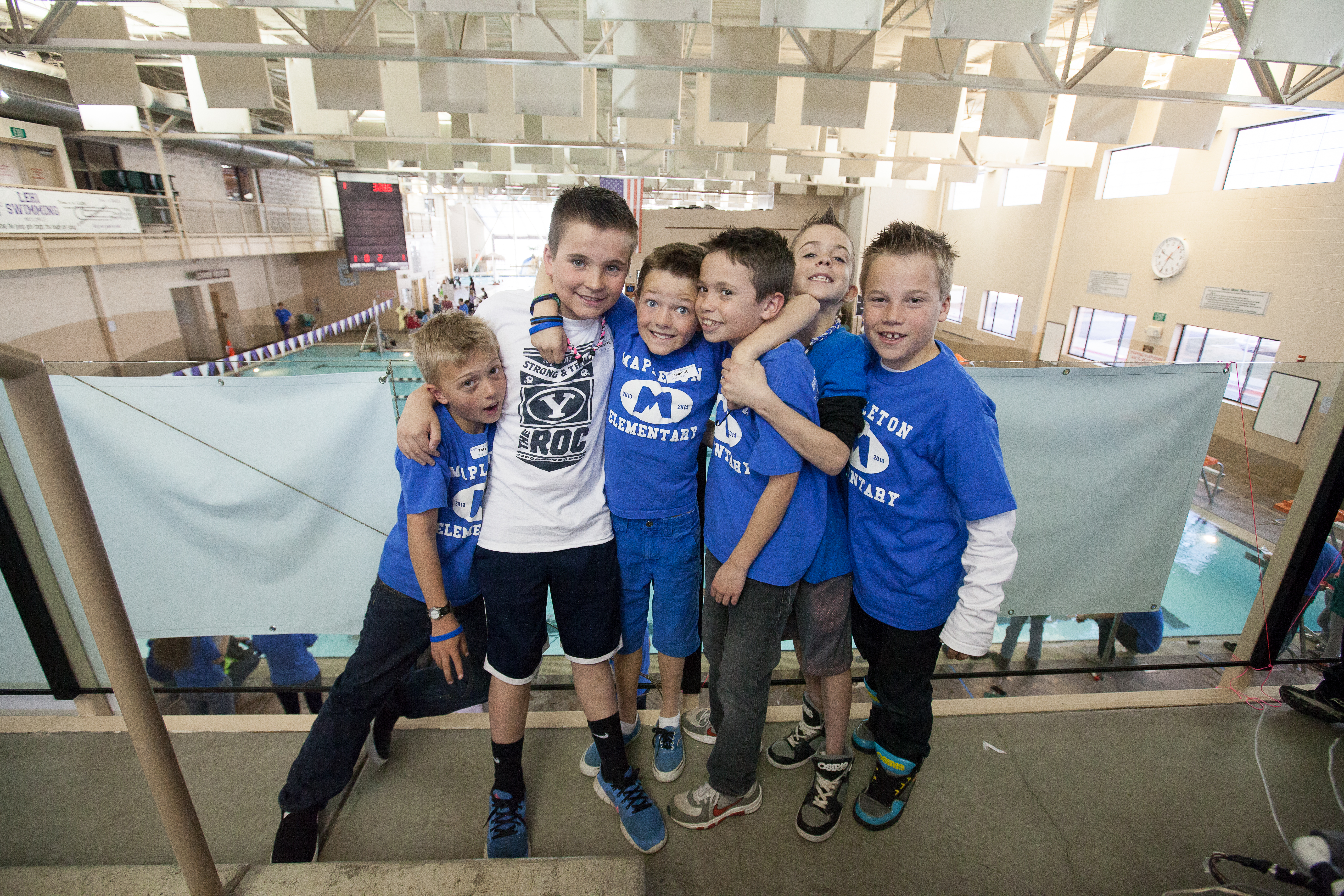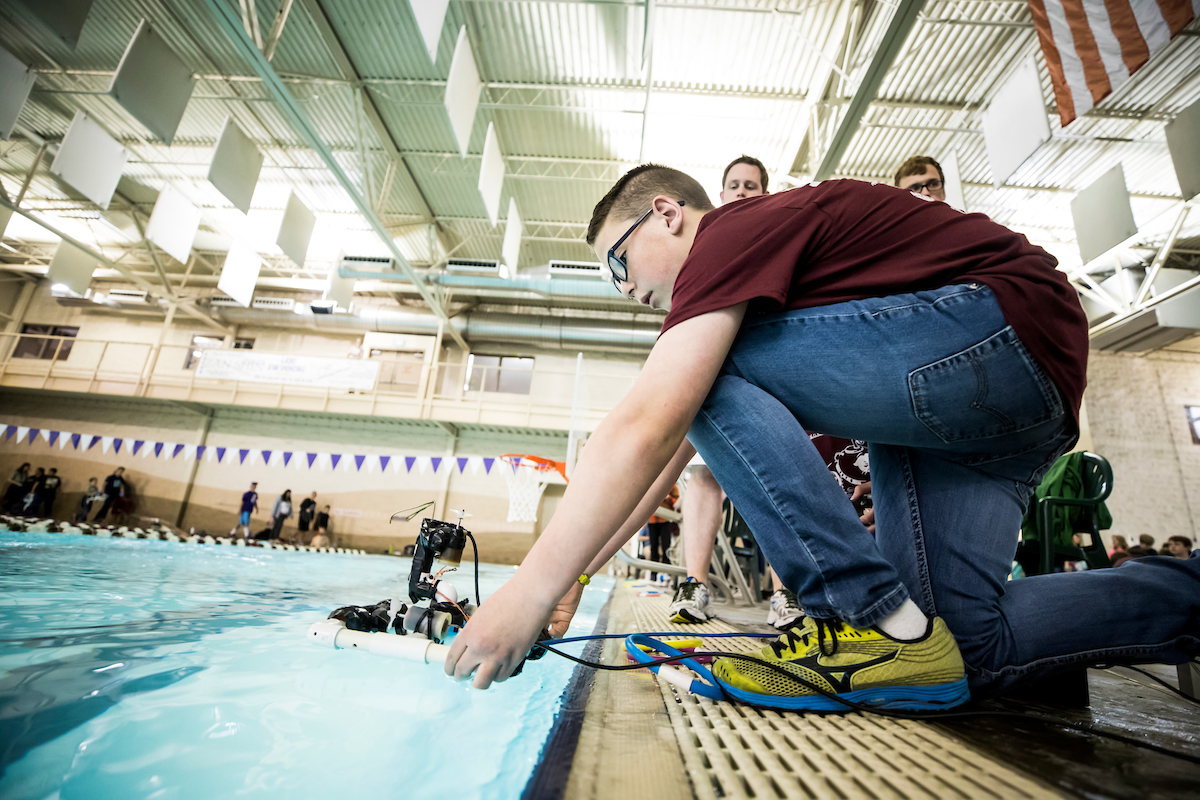
Hundreds of middle and elementary school students will participate in BYU’s Utah Underwater Robotics competition March 28 at the Lehi Legacy Center pool.
Utah Underwater Robotics, or UUR, is an underwater robotics outreach program in Utah middle and elementary schools that was established in 2012, according to professor and UUR Managing Director Geoff Wright.
“The program provides students with a hands-on opportunity to build tethered, underwater robots while learning valuable concepts in science, technology, engineering and mathematics,” Wright said.

Not only is this competition the largest in Utah, but it is also one of the largest in the country with more than 900 students participating.
The students began preparing their robots in November for the competition in March, according to UUR Y-Serve Program Director Derek Knowles. Every week, a BYU student travels to the schools to assist the students in building their robots.
“The objective is to give hands-on engineering learning experience,” Wright said. “It’s for students that don’t usually participate in engineering activities in their schools.”
Each year, students are given a real-life scenario to solve. This year’s competition is a simulation of a Utah Lake restoration project.

The students need to design and build an underwater robot that can clean up trash, deposit a tank of chemicals to balance pH levels and reintroduce native fish to the lake, all while avoiding getting tangled in the toxic algae that cover the lake bottom, according to the UUR presidency.
According to Wright, the data from a pre-post survey shows students’ interest in STEM increases just from participating in the competition.
“We are shifting attitude with little effort,” Wright said. “ I don’t think the point is shifting the needle so much that you make engineers — I don’t care about that. What I care about is that kids aren’t scared to make and use batteries in a circuit. To expose them to how their world works is huge.”

The competition allows non-aspiring engineering students to have exposure to engineering-type activities and also allows those who might be interested in engineering to gain exposure, according to electrical engineering student and UUR member Justen Gardner.
The competition “introduces them to a lot of opportunities that they would not otherwise have,” Gardner said. “We are not trying to make engineers, but sometimes people don’t know they want to be engineers until something like this. If this had existed when I was a kid, I feel like I would be so much further along.”
According to UUR Student Director Brady Moon, the students receive a unique opportunity to explore the world of engineering.
“We have brought this opportunity to my hometown, Duchesne, and they eat it up,” Moon said. “They are getting introduced to what engineering is and it empowers them to try and explore.”
According to Moon, the competition’s cost is low compared to other robotics programs around the country. Instead of paying $1,000 to $2,000 per team, students use household items to create their underwater robots.
“We are not only the biggest but (also) the cheapest, so there’s not a huge barrier of entry,” Moon said. “Engineering doesn’t have to be expensive. This opportunity connects you with the resources that are down on your level.”
Wright praises student volunteers for dedicating their time to the students. According to Wright, without these volunteers, the competition would not be feasible.
“I think school gets depressing because it’s a lot of formulaic learning,” Wright said. “But for (these students) to go out and see other people excited about making and solving problems, I think that’s healthy.”
To get your school involved, contact . To volunteer, contact




